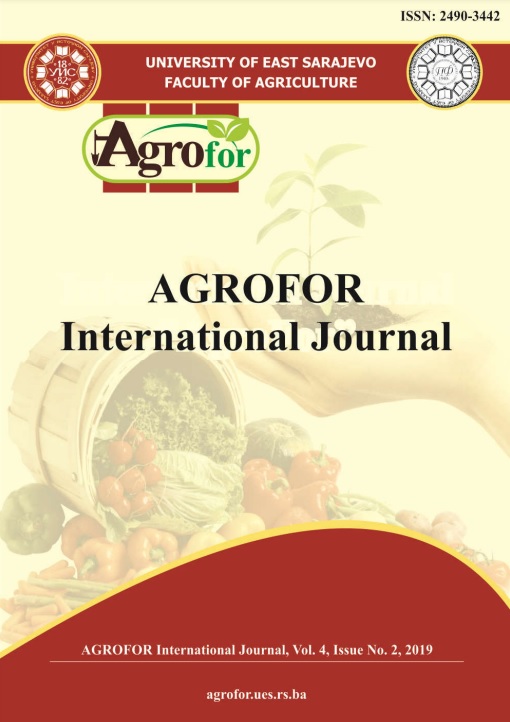RAGWEED AND MUGWORT POLLEN (ASTERACEAE FAMILY) - MONITORING AND COMPARATIVE ANALYSIS OF SEASONAL DYNAMICS DURING 2011-2017
DOI:
https://doi.org/10.7251/AGRENG1902012BAbstract
In addition to appearing in crops, weeds may pose a risk to human health, indirectly due to the widespread use of herbicides and directly, because they are source of pollen that in susceptible people can cause allergic reactions. Among the weed species, the main allergens are the species of the botanical family: Asteraceae, Amaranthaceae, Urticaceae, Euphorbiaceae and Plantaginaceae. Asteraceae family includes 1,100 genera and 20,000 species, which is one of the largest flowering plants. However, in our area as a potential allergen the most important is Ambrosia and Artemisia pollen. Sampling of ragweed and mugwort pollen during the pollination period 2012-2017 was conducted in urban part of Banja Luka in PI AIRS, BL with Hirst sampler using the method defined by the International Association for Aerobiology (IAA). The first mugwort pollen grains in 2011 were recorded at the end of May, during 2012 and 2016 in the first decade of June, and from 2013 to 2015, as well in 2017 in the second decade of June. Mugwort pollination period lasted for an average of 55 days and it was characterized by low (1-10 p/m3) to moderate (11-50 p/m3) concentrations. The ragweed period pollination during the seven-year monitoring lasted, on average, about 115 days. High concentrations (51-500 p/m3) were recorded between the second decade of August to the third decade of September, while very high concentrations (501 p/m3) were recorded only in 2011. On an annual basis not only the season of ragweed pollination lasted longer, but the results of the monitoring and comparative analysis showed significantly higher % share of ragweed pollen within the weed species in the family Asteraceae in the city of Banja Luka.

